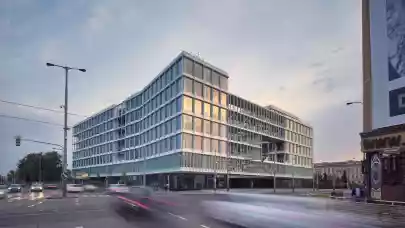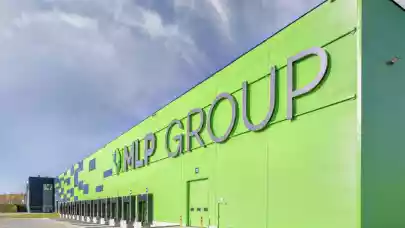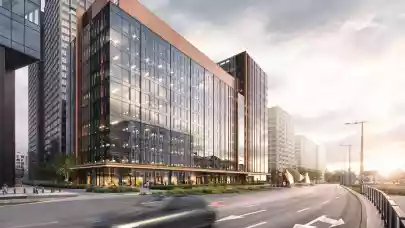
The office space market in Prague is currently doing very well and has a great potential for further development. Its excellent condition is illustrated by several parameters that Cushman & Wakefield has been monitoring on a long-term basis and whose correct interpretation in relation to the current results is presented here. These indicators are primarily the highly positive trend in the office demand (the occupied office space increased by 47,000 sqm), vacancy rate remaining at its record-breaking low (with just 4.6% of stock being vacant) and the highest number of newly opened buildings in the last five years (17 buildings including 11 newly built ones).
Net demand still in black ink
The best indicator for demand, which illustrates the actual condition of the office market, is net absorption. It is the change in the size of the total occupied area in a period of time. This has remained positive in recent years, which means that there is demand both for space in newly opened buildings and for space vacated by firms that move into new premises. For the last quarter, the total occupied office area has grown by almost 47,000 sqm while approximately 52,000 sqm of new office space was added. The positive trend is long-lasting – the last time the net absorption indicator was negative was in early 2015.
Record-breaking low vacancy rate
This market situation has resulted in a continued very low percentage of vacant space, which was just 4.6 per cent at the end of the second quarter. One year ago, the rate was 6.7 per cent and the vacant space was also the largest in total terms.
Michal Soták, Partner, Head of the Capital Markets team in the Czech Republic, Cushman & Wakefield: “The low vacancy rate confirms that the development of new space makes sense and has a great potential – there is not enough vacant office space available and the demand for it is extremely high; it is taken up almost instantly. This is also one of the reasons why new development continues growing.”
A record-breaking year: 17 completed projects
When comparing the last five years, the number of new office projects is also record-breaking. Overall, the development or refurbishment of 17 buildings has been completed or will be completed by the end of the year, and 11 of those are entirely new projects – another record figure.
Despite such large volume of newly built office stock, the demand for it is immense, as confirmed by more than 50 per cent occupancy (pre-lease) rate for all projects under construction to be completed this year. It is safe to say that the new schemes are occupied almost immediately after completion. Rustonka is one example: the scheme’s third building was completed only in the previous quarter, but as of now the only vacant space left amounts to 250 sqm – less than two per cent of the total area of more than 38,000 sqm. Buildings under construction outside the highly popular quarter of Karlín are also much in demand: less than one year after opening, the new schemes such as the Visionary in Holešovice, City West A1 in Stodůlky and Eurovia in Krč are now fully occupied.
There is nowhere to move in to: the percentage of renegotiated leases is growing
If companies do not relocate, this is because there is not much vacant space available and the space in popular locations of the greater centre of the city is more expensive than the companies’ existing premises. As a result, renegotiating their existing lease agreements is the only solution available. In other words: they stay in their former locations because they have nowhere to go. In this situation, the percentage of renegotiations has reached almost 50 per cent of take-up. This is favourable for property owners since they can hike the rents as a result.
Given this situation, take-up, or gross demand calculated on the basis of actually concluded lease agreements, has also slightly decreased in the last quarter. The decrease is eight per cent in comparison with the previous quarter. Accumulated demand has also decreased eight percent over the last 12 months in comparison with the previous quarter.
Michal Soták, Partner, Head of the Capital Markets team in the Czech Republic, Cushman & Wakefield: “The decrease is not radical in the long-term perspective, but it is true that the activity of companies – occupiers on the market – has been slightly decreasing recently. In addition to the aforesaid shortage of new office space, this also stems from other factors, including but not limited to the shortage of qualified manpower, and thus a lower rate of growth in the numbers of companies’ employees.”
Demand exceeds supply
Whatever the situation in companies, it does not say anything about demand. This is best documented by the aforementioned absorption indicator – the ratio of square metres developed to those absorbed indicates that there has been continued overhang of demand over supply.
Michal Soták, Partner, Head of the Capital Markets team in the Czech Republic, Cushman & Wakefield: “Even though many companies stay where they are and renegotiate their lease agreements, the occupied space is definitely increasing. As a result, the market still offers huge room for developers, owners and investors.”



